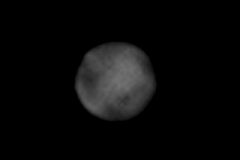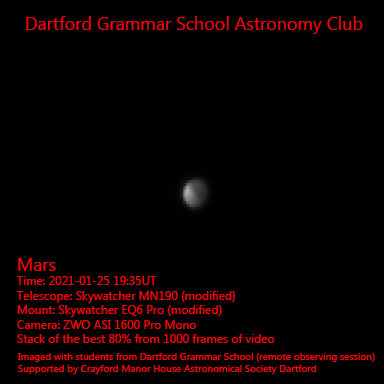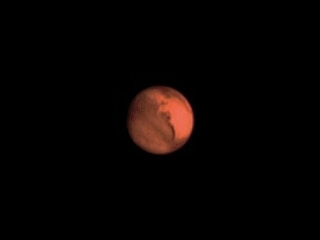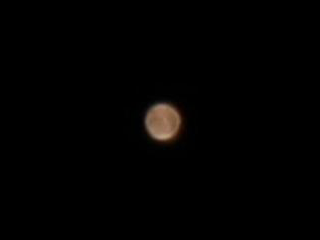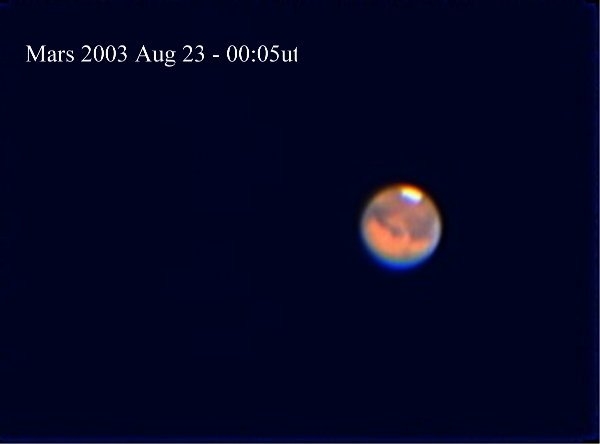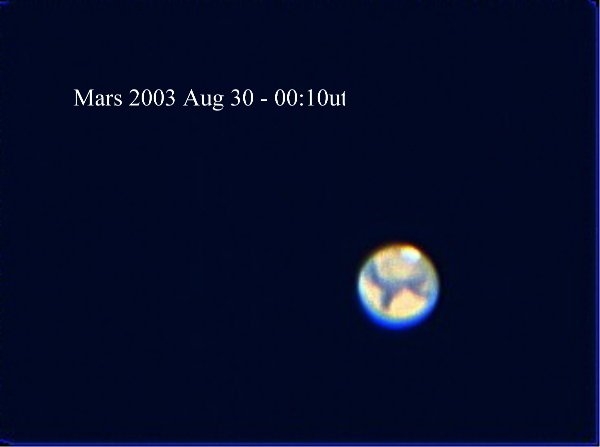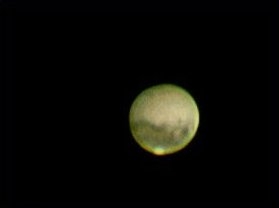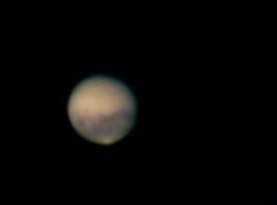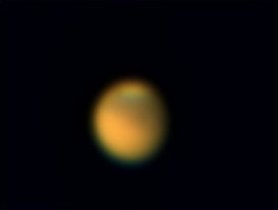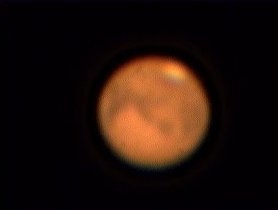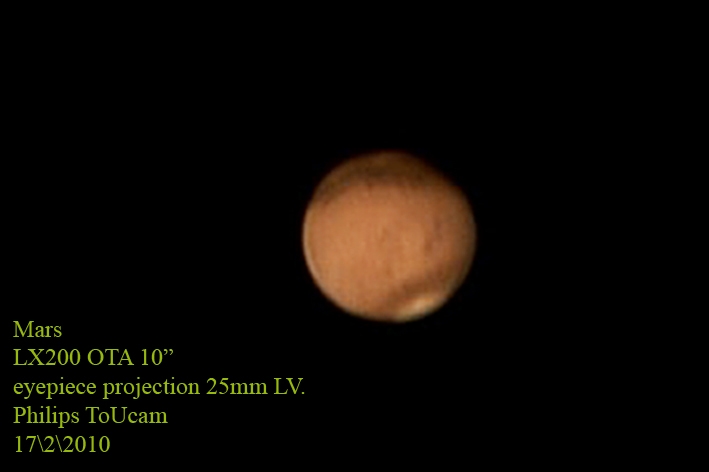Observing Mars
Mars is about twice the distance from the Sun as the Earth, as a result the anguar size of Mars varies considerably depending on the relative positions of Mars and Earth in their orbits around the Sun.
Through a small telescope you should be able to see Mars as a disk, the polar caps should also be visible and on nights with good seeing you shoudl be able to see some features on the surface.
Useful Filters:
Light Yellow (Wratten #3) Improves contract of albedo features on the surface.
Yellow-Green (Wratten #11) Good for reddish-brown surface features.
Red (Wratten #25A) Improve contrast of polar caps.
Dark Blue (Wratten 38A) Good for white clouds.
Medium Blue (Wratten 80A) Good for white clouds.
Imaging:
Lucky imaging using a digital sensor will provide the best results, a monochrome sensor will reduce your exposure time and help freeze the seeing. A red or IR Pass filter will help freeze seeing but at the expense of longer exposures.
Slideshow
Other Images
Sun | Comets | Mercury | Venus | Atmospheric Optics | Meteors | Auroa and NLC | Moon | Minor Planets | Mars | Jupiter | Saturn | Uranus | Neptune | Messier | Caldwell | All Deep Sky | Conjunctions | Transits | Solar Eclipse | Lunar Eclipse | Wide Field |ISS & Space Junk | Exo-Planets
All images are copyright. Permission must be sought to from the image owner to the use of any of these images.

